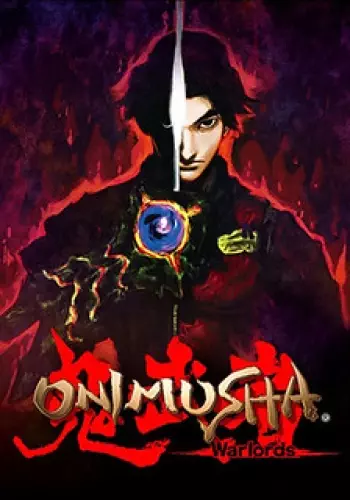
Review: Onimusha 2: Samurai’s Destiny (Switch)
When Onimusha: Warlords debuted on Switch back in 2019, we eagerly anticipated that its follow-up would be just around the bend. How naïve we were. While some patience was necessary, now, after more than six years, Onimusha 2: Samurai’s Destiny has at last received the same remaster treatment. We can’t be too frustrated with the prolonged wait; with Capcom aiming to fully rejuvenate the franchise with Onimusha: Way of the Sword in 2026, this may be the perfect time to remind gamers of what could very well be the greatest installment.
Regarding the enhancements in the Switch remaster, you can refer to the original as a solid standard. Graphics have received a pleasing upgrade, and while there are no improvements akin to those enjoyed by the Resident Evil series in the past, the transition to HD is still quite appealing. Some portions can appear a bit blurry in handheld mode, but overall, it’s a visually appealing game, supported by solid art design.
One element that stood out to us, however, was the aspect ratio. By default, the game is shown in a widescreen 16:9 format, but you can change this to the original 4:3 format via the options menu. We chose the latter for most of our gaming session, as the widescreen mode trims off significant parts of the environment and action by merely zooming in to occupy the area. The game doesn’t adjust the camera like in the HD version of the Resident Evil remake to accommodate the content loss; in many scenes, it’s simply absent. If you can handle the black bars on the edges, stick to 4:3.
The gameplay has been revamped, with ‘modern’ movements assigned to the analogue stick, while the classic ‘tank controls’ are assigned to the D-pad. It would have been preferable to have an option to swap these for the purists, but with only two control settings available, the only alteration you’re able to make is which analogue stick can be pressed to initiate a quick turn. Not earth-shattering, but a bit more flexibility would be appreciated.
The modern controls feel quite good for the most part. Since we’re still dealing with fixed camera perspectives, there are brief instances where pressing in one direction causes protagonist Jubei to jerk left or right as you adjust your movement with a sudden camera shift. Tank controls simply require you to press ‘up’ to advance, so they don’t suffer from this issue, but they certainly feel more cumbersome by comparison.
To better illustrate the gameplay and visuals, Onimusha 2 serves as a bridge between the strict constraints of classic Resident Evil and the more fluid approach of Devil May Cry, even though the latter was released a year prior to Onimusha 2. There are no sweeping camera movements present, which is unfortunate since the game’s fixed angles felt outdated as far back as 2002, but the gameplay does feel more nimble and responsive than anything you’d encounter in those early RE titles.
The narrative centers on Jubei Yagyu, who succeeds Samanosuke as the last remaining member of a clan annihilated by the malevolent Nobunaga Oda. To be candid, Jubei is somewhat of a dull protagonist with a conventionally gruff voice, but his lack of charm is balanced by the surrounding characters, including the lively Ekei Ankokuji and the flamboyant demon Gogandantess.
Gameplay combines swordplay and light puzzle-solving. Jubei can handle various unique weapons throughout the story, starting with a basic katana before acquiring a spear, a hammer, and others. You can lock onto foes, sidestep around them, and employ a slick mix of offensive and defensive maneuvers, including the ability to kick your adversaries backward and stab them with a sharp thrust.
Defeating enemies once again leads to their souls drifting up into the atmosphere, at which point you can absorb them using your gauntlet. This enables you to regain lost health, enhance your magic meter, and upgrade your gear at various shrines scattered throughout the world. Onimusha 2 incorporates some RPG elements, but it’s light enough that those who aren’t particularly fond of such mechanics need not be concerned. It’s largely just a matter of selecting which weapon to upgrade, holding down ‘A’ to spend your currency, and away you go. Importantly, you’re not heavily penalized for opting out of it.
In summary, Onimusha 2 represents a notable advancement over its predecessor, featuring deeper combat mechanics, more diverse environments, thrilling boss battles, and compelling puzzles (including Sudoku!). The soundtrack also deserves special mention, drawing inspiration from the feudal backdrop to enhance its authenticity while providing an array of catchy tunes you’ll be humming long after the credits roll.
Delightful little extras have also been packed into the remaster. If you’ve played through Onimusha 2 multiple times, you might ‘appreciate’ the new Hell difficulty setting, where Jubei can be dispatched with just a single blow – brutal indeed. Conversely, an Easy mode has also been introduced if you prefer to experience the narrative without much difficulty.
always appear impressive.
Conclusion
Onimusha 2: Samurai’s Destiny stands as a formidable, deserving successor to the original that is now at its peak on Switch. Some elements feel outmoded by contemporary standards due to fixed camera perspectives that arguably should have been eliminated back in 2002, yet it remains incredibly enjoyable regardless. The remaster includes numerous quality-of-life enhancements and bonuses that both long-time fans and newcomers will value, but ultimately, this is a loyal revival of one of the PS2’s finest titles. Now the patient anticipation for Onimusha 3 begins.
